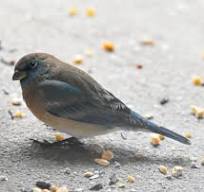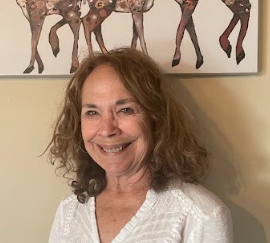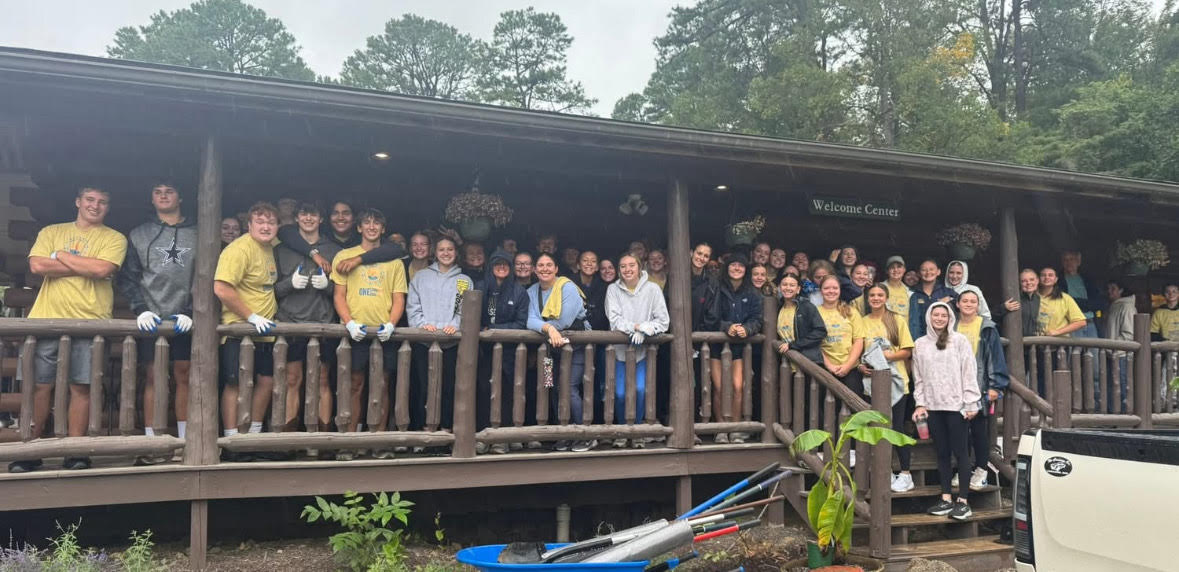Indigo Bunting, Summer Tanager, Gold-crowned Kinglet, and Red-eyed Vireo are among some of the sought-after and often reclusive birds that birding enthusiasts try to see and photograph. Once thought of as a hobby for older people, bird watching among the younger generation has taken flight. According to the U.S. Hunting and Wildlife Service, bird watching is becoming more popular among younger people.
“The number of 16- and 17-year-olds observing wildlife near home increased from 1 million in 2016 to 3.2 million in 2022, according to the National Survey of Fishing, Hunting, and Wildlife-Associated Recreation” (Sheridan). In an Eye of the Gale questionnaire, more Lancaster High School students and staff have been bird watching.

LHS freshman Nathan Hoke said he started bird watching at a young age and likes seeing the divergent birds.
“I started bird watching when I was five when I found a pair of binoculars in my grandma’s sunroom. I enjoy seeing the different types of birds, and sometimes I’ll look in the woods with the binoculars while bird watching and see deer and bird nests. I have seen American pipits, blue jays, and robins,” he said.

“I have been bird watching for almost three years and started it when I met a guy in the park watching birds. He taught me some really cool things about it. The Baltimore oriole and the eastern bluebird [are] beautiful and interesting to me,” said Eric Brown, a sophomore at LHS.

Like Hoke and Brown, LHS freshman Leola McCarty Littrell said that she was just a kid when she became interested in ornithology.
“I started when I was eight. I started this hobby because my mom worked at Hocking, making me interested in wildlife, but more importantly, birds. I love watching predator birds and woodpeckers. I enjoy how calming and relaxing the hobby is. It is also an amazing way to get connected with your surroundings and nature, as well as ground yourself,” she said.
In January this year, a Lazuli Bunting, never before seen in Ohio, made its debut in Meigs County.

Within hours the birding community was all aflutter. According to the Columbus Dispatch, more than 300 people flocked to the area to see the rare blue-feathered bird in less than ten days (McCormac). LHS social studies teacher Richard Hines said that the surrounding area provides many opportunities to study birds.
“Around Lancaster there are a lot of songbirds to see, especially in spring and autumn. Some of the more challenging ones to find are warblers and tanagers that stay high up in trees and deeper in forests. Owls can be difficult to spot also, but every once in a while you get lucky. Lots of waterfowl and raptors are available around Lancaster also. Some of the most fun ones to watch are hummingbirds, woodpeckers, and nuthatches. I’ve always enjoyed hiking and outdoor activities. Bird watching is an easy pastime while hiking and camping. Backyard feeders can give lots of entertainment in the early mornings and evenings. It’s peaceful, keeps you in touch with nature, and the habits of birds are enjoyable,” said Hines.

Lancaster resident Heidi Watts said that she enjoys identifying the birds and is always excited to see a new type of bird at her feeder. “I really enjoy watching the hummingbirds and am very excited to see the first one in the spring. I think it’s so amazing how they fly all the way from South America in the spring. In the quietness of early morning and evening, it’s fun to listen to and see the cardinals. Watching the birds at the feeder when visiting my mom gave me a love and curiosity of bird watching,” she said.
Birding is big business in the United States. According to the U.S. Fish and Wildlife Service, “more than six out of every ten dollars spent in 2022 on wildlife-related recreation (which also includes hunting and fishing) came from wildlife watching, with birds cited as the greatest focus for wildlife watchers. Altogether, wildlife watchers spent more than $250 billion last year to engage in their hobby—including more than $24 billion on equipment such as binoculars, cameras, and bird food—for an average of $2,188 per person” (Carver).

LHS art teacher Shannon Fish said that she has been interested in bird watching from a young age and has always enjoyed the variety of bird colors and calls.
“My family has had a bird feeder viewable from the house since I was a little girl. We kept the Audubon bird identification book on the windowsill so we could learn all the proper names for our feathered visitors. While on vacation in Maine, we took a cruise just to see Puffins in their natural, American habitat. In college, I saw a large group of common cranes nesting while in Italy. Locally, spotting a tiny Indigo Bunting or colorful Baltimore Oriole are favorites,” she said.
The Winter 2024 issue of Living Bird magazine reports that “around 96 million people in the U.S. closely observed, fed, or photographed birds; visited public parks to view birds; or maintained plantings and natural areas around the home for the benefit of birds in 2022. That’s more than 35 percent of the nation’s population aged sixteen and over” (Devokaitis). Additionally, Cornell University’s Lab of Ornithology, which operates the Merlin App for tracking and identifying bird calls, reports that a third of American adults are birdwatchers.








